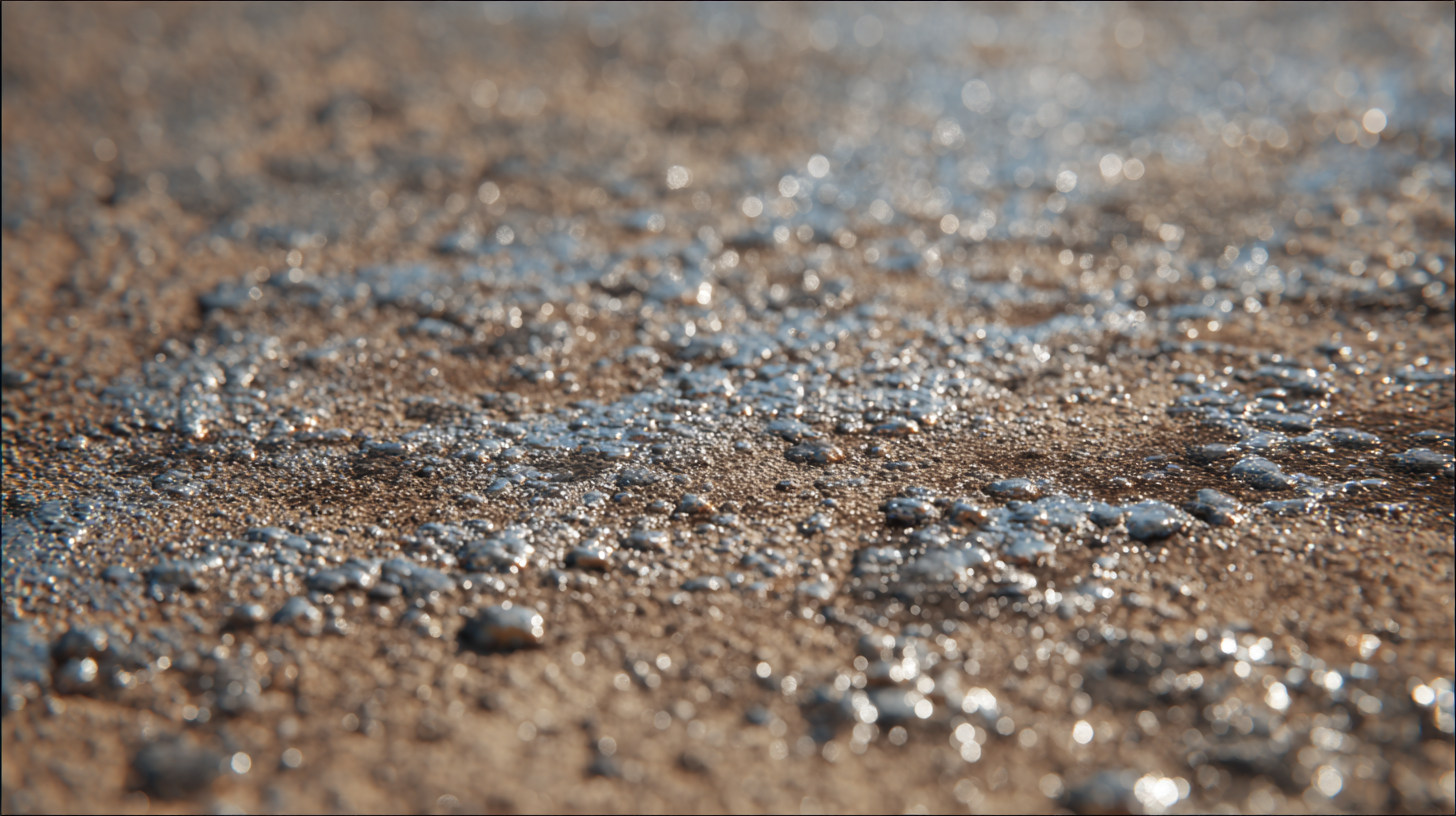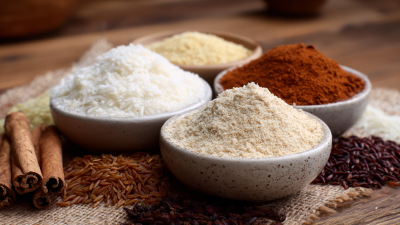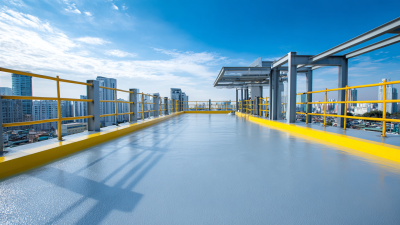Top Strategies for Effective Surface Dressing: Enhance Durability and Aesthetics
Table of Contents
- Understanding Surface Dressing: Key Concepts and Benefits
- 5 Essential Materials for Optimal Surface Dressing Performance
- Top 4 Techniques to Ensure Long-Lasting Surface Aesthetics
- 7 Common Mistakes to Avoid in Surface Dressing
- Importance of Regular Maintenance in Enhancing Surface Durability
- How Climate and Environment Affect Surface Dressing Choices
- FAQS
- Conclusion
- Related Posts
In the realm of infrastructure maintenance, Surface Dressing has emerged as a pivotal technique for enhancing the durability and aesthetics of roads and pavements. According to a recent industry report by the International Journal of Pavement Engineering, effective surface dressing can extend the lifespan of asphalt surfaces by up to 10 years while reducing maintenance costs by approximately 30%. As a leader in specialty chemicals, SHANGHAI QIXUAN CHEMTECH CO., LTD. plays a crucial role in this field by providing innovative additives such as fatty amines and surfactants that enhance the bonding properties of surface treatments. Combining these high-performance chemical solutions with strategic application methods is essential for maximizing the benefits of surface dressing, ensuring that infrastructure not only meets functional demands but also achieves remarkable aesthetic appeal.

Understanding Surface Dressing: Key Concepts and Benefits
Surface dressing is a vital technique in road maintenance that significantly enhances both the durability and aesthetic appeal of a roadway. At its core, surface dressing involves applying a layer of bitumen followed by the spreading of aggregate materials over the surface. This process not only seals the underlying layers, preventing water ingress which can lead to deterioration, but it also provides a fresh, new look that improves the overall visual appearance of the road.
One of the key benefits of surface dressing is its cost-effectiveness. Compared to other paving methods, surface dressing is less disruptive and can be completed in a short timeframe, minimizing traffic delays. Additionally, it extends the lifespan of the existing pavement by providing a protective layer that enhances skid resistance and improves safety for drivers. Understanding these key concepts and benefits empowers municipalities and contractors to prioritize effective surface dressing strategies, ensuring sustainable and visually appealing roadways for all users.
5 Essential Materials for Optimal Surface Dressing Performance
When it comes to surface dressing, selecting the right materials is crucial for achieving both durability and aesthetics. Here are five essential materials that can significantly enhance surface dressing performance. Firstly, high-quality aggregates play a vital role as they determine the surface strength and resistance to wear. Recent studies suggest that the particle size of aggregates can influence the overall quality, making it imperative to choose appropriately sized materials for optimal results.
Another key material is polymer-based binders, which not only improve adhesion but also contribute to flexibility and longevity of the surface. The latest innovations in the use of polymers have demonstrated them as effective in various applications, ensuring the dressed surfaces can withstand environmental stressors.
Additionally, advanced hydrogels are making waves in the surface dressing industry. Their 3D hydrophilic structures can provide enhanced protective barriers and mimic natural surfaces, which is especially important in specialized applications, such as athletic fields. These materials ensure that surfaces remain functional and visually appealing over time.
**Tips**: Always consider the local climate conditions when selecting materials, as this can affect the lifespan of your surface dressing. Additionally, conducting proper testing on small-scale applications before full implementation can save time and resources in the long run.
Top Strategies for Effective Surface Dressing: Enhance Durability and Aesthetics
This chart illustrates the effectiveness of various materials used in surface dressing, focusing on their durability and aesthetic contributions. Each material's performance is rated on a scale from 1 to 10, providing insights into optimal choices for surface dressing applications.
Top 4 Techniques to Ensure Long-Lasting Surface Aesthetics
When it comes to enhancing the durability and aesthetics of surfaces, applying effective dressing techniques is crucial. Studies have shown that well-implemented surface dressing can extend the lifespan of pavements by up to 20 years, demonstrating its significant impact on infrastructure longevity. Among the most effective methods, here are the top four techniques:

First, selecting the right materials is essential. Utilizing high-quality aggregates mixed with polymer-modified binders can improve adhesion and resilience, ensuring the surface withstands heavy traffic and harsh weather conditions. According to a report by the National Asphalt Pavement Association, roads treated with advanced polymer blends exhibit a 30% increase in resistance to raveling compared to standard mixes.
Tip: Always conduct a thorough material compatibility assessment to maximize the performance of your surface dressing.
Second, proper surface preparation is key. This includes cleaning and repairing existing cracks before application. The Federal Highway Administration emphasizes that neglecting surface preparation can lead to premature failure, reducing the effectiveness of your surface dressing by as much as 50%.
Tip: Implement regular maintenance checks to identify and address any surface defects before the dressing process begins.
Lastly, ensure optimal application techniques, such as appropriate temperature and thickness, to achieve the best results. Following the manufacturer’s guidelines on application conditions can make a substantial difference in the aesthetic finish and durability of the dressed surface.
7 Common Mistakes to Avoid in Surface Dressing
When it comes to surface dressing, avoiding common pitfalls can significantly enhance both the durability and aesthetic appeal of your surfaces. One prevalent mistake is neglecting proper surface preparation. Failing to clean and repair the underlying substrate can lead to poor adhesion and premature failure. It's essential to remove debris, patch any cracks, and ensure the surface is dry before applying the dressing.
Another common error is choosing the wrong materials for the specific environment or use case. Not all aggregates or binders are suitable for every situation; selecting inappropriate materials can compromise the longevity and appearance of the dressing. Additionally, overlooking the weather conditions during the application process can lead to uneven curing, which ultimately affects performance. Ensuring optimal conditions—such as temperature and humidity—will improve the results significantly, so always check the forecast before embarking on your project.
Importance of Regular Maintenance in Enhancing Surface Durability
Regular maintenance is crucial for enhancing the durability of surface dressing. Without adequate care, even the highest quality surface treatments can succumb to wear and tear, reducing their lifespan significantly. Implementing routine inspections to identify any cracks or surface issues is essential. By addressing these problems early, property owners can prevent more extensive damage that may require costly repairs.
One effective strategy for maintenance is the use of a sealing solution. Applying a sealant can protect the surface from moisture penetration, which can cause underlying materials to degrade over time. Additionally, routine cleaning helps remove debris and materials that can lead to surface deterioration. Consider using gentle pressure washing in combination with appropriate cleaning agents to keep the surface looking fresh and inviting.
Another tip is to schedule periodic reapplication of surface dressing materials. This not only refreshes the appearance but also reinforces the protective layer, ensuring that it can effectively withstand environmental challenges. Consistent upkeep not only enhances longevity but also maintains the aesthetic appeal of the surfaces, creating a lasting impression.

How Climate and Environment Affect Surface Dressing Choices
When considering the right approach to surface dressing, it’s crucial to recognize how climate and environmental factors significantly influence material selection and application techniques. For example, in humid regions, the choice of surfactants and additives becomes vital to prevent moisture-related deterioration.
Surfactants, such as those produced by SHANGHAI QIXUAN CHEMTECH CO., LTD., play a key role in improving adhesion and longevity of surface treatments. Our cationic and nonionic surfactants are particularly effective in enhancing the durability of surface dressings, ensuring they withstand the challenges posed by varying weather conditions.
Moreover, in areas with extreme temperature fluctuations, the flexibility and resilience of the surface dressing material are paramount. The integration of specialty chemicals, like our polyurethane catalysts, can provide critical properties, allowing surfaces to maintain their integrity and aesthetics over time.
Understanding the local environment not only guides the selection of effective materials but also aligns with sustainable practices, ultimately promoting longer-lasting surfaces that meet both functional and aesthetic needs. By leveraging the right chemical components tailored to specific climatic conditions, manufacturers can achieve superior results in surface dressing applications.
FAQS
: Surface dressing is a road maintenance technique that involves applying a layer of bitumen and spreading aggregate materials over it, enhancing both durability and aesthetic appeal.
The main benefits of surface dressing include cost-effectiveness, minimal disruption to traffic, extended lifespan of existing pavement, enhanced skid resistance, and improved safety for drivers.
Surface dressing provides a fresh, new look to the roadway, enhancing its visual appeal and making it more attractive to users.
Climate and environmental factors greatly influence material selection, including considerations such as humidity and temperature fluctuations, which affect the choice of surfactants and additives.
Surfactants, such as those produced by SHANGHAI QIXUAN CHEMTECH CO., LTD., are important because they improve adhesion and longevity, preventing moisture-related deterioration of surface treatments.
In areas with extreme temperature fluctuations, the flexibility and resilience of the surface dressing material are critical to maintaining integrity and aesthetics over time.
Specialty chemicals, like polyurethane catalysts, provide essential properties that enhance the flexibility and durability of surface dressing materials, allowing them to withstand various environmental challenges.
By understanding local climate conditions, manufacturers can select effective materials that align with sustainable practices, leading to longer-lasting surfaces that meet both functional and aesthetic needs.
Surface dressing is less disruptive compared to other paving methods and can be completed in a short timeframe, minimizing traffic delays during application.
Municipalities can enhance the durability and visual appeal of roadways by prioritizing effective surface dressing strategies, ensuring sustainable roads for all users.
Conclusion
Surface dressing is a critical technique in enhancing both the durability and aesthetic appeal of various surfaces. Understanding its key concepts and benefits sets the foundation for successful application. Utilizing the right materials, such as specialty chemicals from SHANGHAI QIXUAN CHEMTECH CO., LTD., can significantly improve the performance of surface dressing. Techniques to ensure long-lasting aesthetics are essential, alongside recognizing common mistakes in the process that can compromise quality.
Regular maintenance plays a vital role in sustaining surface durability, and it's crucial to consider how climate and environmental factors affect surface dressing choices. By implementing these strategies, one can achieve an effective surface dressing that not only meets aesthetic goals but also withstands the test of time.
Related Posts
-

Exploring the Advantage of Best Efficient And Easy To Disperse Products in Industrial Applications
-

Navigating the 2025 Tech Trends: How the Best 110615-47-9 Can Transform Your Supply Chain Efficiency
-

8 Best Uses of Cas 68607 29 4 for Your Industry Needs
-

Assessing the Market Leaders: A Comparative Study of the Top Organic Synthesis Intermediates in 2023
-

Innovative Applications of Bitumen Emulsifier in Modern Construction Projects
-

7 Essential Tips for Sourcing the Best Cab 35 for Your Business Needs

